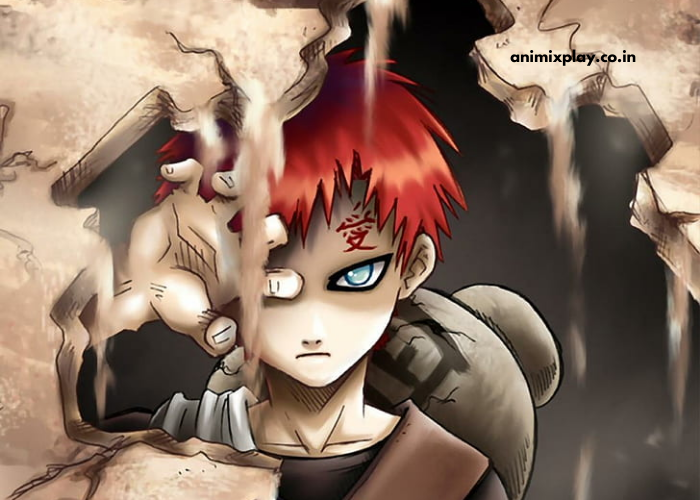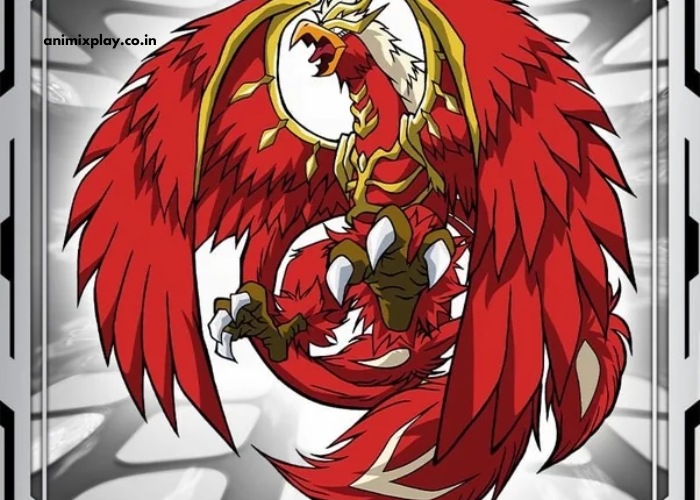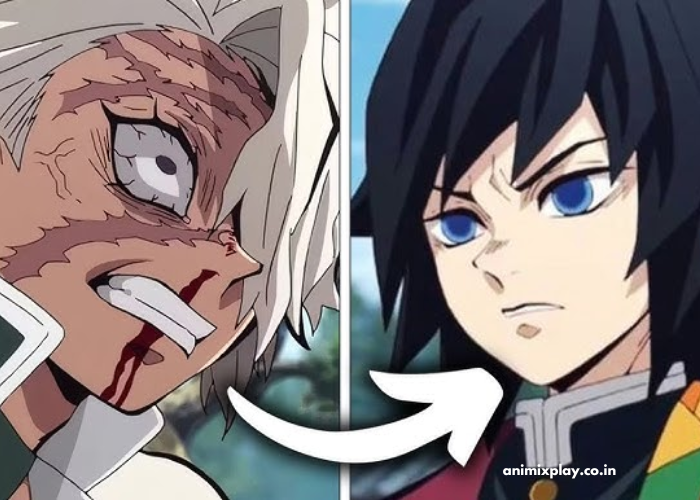Gaara is one of the most complex and intriguing characters in the world of Naruto. As a powerful ninja of the Sand Village, Gaara’s journey is filled with intense personal struggles, extreme isolation, and a search for meaning in a world that seems to reject him.
His evolution from a misunderstood, tragic figure to a heroic leader showcases the strength and determination it takes to overcome a past filled with pain. Let’s explore the power and tragedy behind Naruto’s Sand Ninja, Gaara, and the key elements that define his character.
Key Points:
- Gaara’s early life was marked by abandonment and torment, shaping his dark persona.
- His powers, drawn from the tailed beast Shukaku, played a major role in both his strength and his suffering.
- Gaara’s journey toward redemption and finding true strength is a testament to growth and transformation.
What Is Gaara’s Early Life and Tragedy?
Gaara’s story begins with profound tragedy. Born into the Sand Village, he was never loved by his parents or the people around him. From the moment of his birth, he was rejected by his own family because he was the host of the one-tailed beast, Shukaku. His mother died during childbirth, and his father, the village leader, saw him as a weapon rather than a son. This feeling of being unloved and unwanted led Gaara down a dark path.
Growing up, Gaara had to fight for survival. His uncle, Yashamaru, was the only one who showed him any affection, but even Yashamaru was forced to betray him. This betrayal pushed Gaara deeper into despair. With the overwhelming power of Shukaku constantly threatening to overtake him, Gaara’s heart became filled with hatred and loneliness.
In the beginning, Gaara’s primary belief was that love was a lie, and the only thing that mattered was survival. His belief that “I am the only one who matters” stemmed from the constant rejection and torment he faced throughout his life. This isolation was a tragic part of his character’s formation, and it set the stage for his transformation over the course of the series.
How Did Gaara’s Powers Shape His Personality?
Gaara’s powers are not just physical; they are a direct manifestation of his internal conflict. Shukaku, the one-tailed beast sealed inside him, gave Gaara immense strength and a powerful defense system. Gaara can control sand, using it for offense, defense, and even creating weapons. This ability makes him nearly invincible in battle, able to protect himself from attacks and attack his enemies with powerful sand-based techniques.
However, Gaara’s powers come with a heavy cost. The one-tailed beast inside him is constantly attempting to take control, and his violent actions in battle were often driven by this struggle. The fear of losing control of Shukaku made Gaara feel even more isolated from others. His powers, while providing him with unmatched strength, only deepened his internal suffering.
Gaara’s ability to manipulate sand is also symbolic of his emotional state. The sand serves as a shield for him, protecting him from the world around him. However, it also reinforces his separation from others. He’s trapped within the boundaries of his own defense mechanism, unable to truly connect with people. This duality between strength and vulnerability is a central part of Gaara’s character development.
| Gaara’s Powers | Shukaku’s Influence |
| Sand Manipulation | Drives him toward destruction |
| Defensive Shields | Heightens emotional isolation |
| Sand Weaponry | Fuels internal conflict |
| Ultimate Strength | Connection to the Tailed Beast |
What Was the Turning Point in Gaara’s Life?
The turning point in Gaara’s life comes during the Chunin Exams. His encounter with Naruto Uzumaki, the protagonist, drastically changes the course of his life. Naruto, a fellow jinchuriki (host of a tailed beast), understands the pain Gaara is experiencing. Rather than condemning Gaara for his actions, Naruto offers empathy, which resonates with Gaara in a way nothing else has before.
When Gaara sees Naruto’s determination and his desire to protect others, he begins to question his own beliefs. He starts to realize that there is more to life than just fighting and surviving. This meeting challenges Gaara to reconsider his approach to the world and his place in it. Naruto’s influence is key to Gaara’s transformation from a lone, vengeful figure to someone who desires to protect others.
This moment of realization is crucial for Gaara. He learns that love and connection are not weaknesses but strengths. His shift in perspective is evident when he later becomes the Kazekage (leader) of the Sand Village, dedicating himself to protecting his people. The trauma of his past may never fully leave him, but Gaara learns to use his pain as a source of motivation for doing good.
Note: Gaara’s encounter with Naruto represents the power of empathy and understanding, even in the darkest of times.
How Did Gaara’s Leadership Role Impact His Character?
As the Kazekage of the Sand Village, Gaara’s leadership represents his growth and commitment to his people. Initially, Gaara’s leadership is a reflection of his desire to protect and atone for the sins of his past. Having experienced abandonment and violence, Gaara is determined to be the kind of leader who can guide others without instilling fear.
His leadership style, however, is not perfect. Gaara’s journey in leadership is one of learning and self-improvement. He begins to trust his allies, building relationships with other villagers and fellow Kage. His transformation is a beacon of hope for others who have suffered in the same way he once did. As Kazekage, Gaara becomes a symbol of resilience, showing that even the most tragic individuals can rise above their pain and make a positive difference.
Gaara’s rise to power and his evolution as a leader showcase the value of self-growth. His leadership also marks a significant shift in the Sand Village, transitioning from a place of fear and neglect to one of hope and protection. Gaara’s relationship with the people of the village becomes one of mutual respect, a stark contrast to the cold distance he once felt.
| Gaara’s Leadership Evolution | Impact on Sand Village |
| From a loner to a protector | Fostered unity and strength |
| Learns to trust others | Improved village morale |
| Gains respect from other Kage | Enhanced diplomatic relations |
| Helps others heal | Strengthened Sand Village |
What Can We Learn From Gaara’s Story?
Gaara’s story teaches us powerful lessons about resilience, redemption, and the importance of empathy. Despite facing overwhelming odds and enduring personal tragedy, Gaara never gives up on the possibility of change. His journey underscores that even those who have suffered the most can transform their pain into something meaningful.
One of the most important lessons from Gaara’s story is the idea that love is not a weakness. Gaara’s transformation is driven by his ability to open up to others and embrace vulnerability. It is through his relationships with Naruto and others that he learns to heal and become a better person. Additionally, Gaara’s story highlights the importance of self-reflection and growth. We all have the potential to change, no matter how dark our past may be.
Reminder: Gaara’s evolution is a powerful example of how empathy and support can heal even the deepest wounds.
Conclusion
Gaara’s character arc is a testament to the strength of the human spirit. From his tragic beginning to his redemption and ultimate leadership, Gaara proves that pain does not have to define us. Through love, empathy, and self-awareness, Gaara was able to transform from a ruthless warrior into a compassionate leader. His journey is a powerful reminder that even the most broken souls can find their way to healing and peace.
Through Gaara’s experiences, we also learn the importance of not judging others based on their past mistakes. Everyone has a story, and sometimes, the most misunderstood people have the greatest potential for growth. Gaara’s story is truly one of transformation and redemption, showing us that no matter how difficult life may seem, change is always possible.
FAQ’s
- Why is Gaara a tragic character?
Gaara’s tragic backstory involves being abandoned by his family, constantly rejected by his village, and carrying the burden of the one-tailed beast inside him. - How did Gaara’s powers influence his actions in Naruto?
Gaara’s sand manipulation powers, granted by Shukaku, gave him strength but also caused internal struggles, often leading to violent actions driven by the tailed beast. - What role did Naruto play in Gaara’s transformation?
Naruto helped Gaara realize the importance of love and connection, inspiring him to change his outlook on life and become a protector rather than a destroyer. - How does Gaara’s leadership affect the Sand Village?
As Kazekage, Gaara’s leadership style shifts from fear to trust, improving the morale of the village and fostering unity. - What are the main lessons from Gaara’s story?
Gaara’s story teaches us about resilience, the power of empathy, and how even the most painful experiences can lead to personal growth and transformation.




